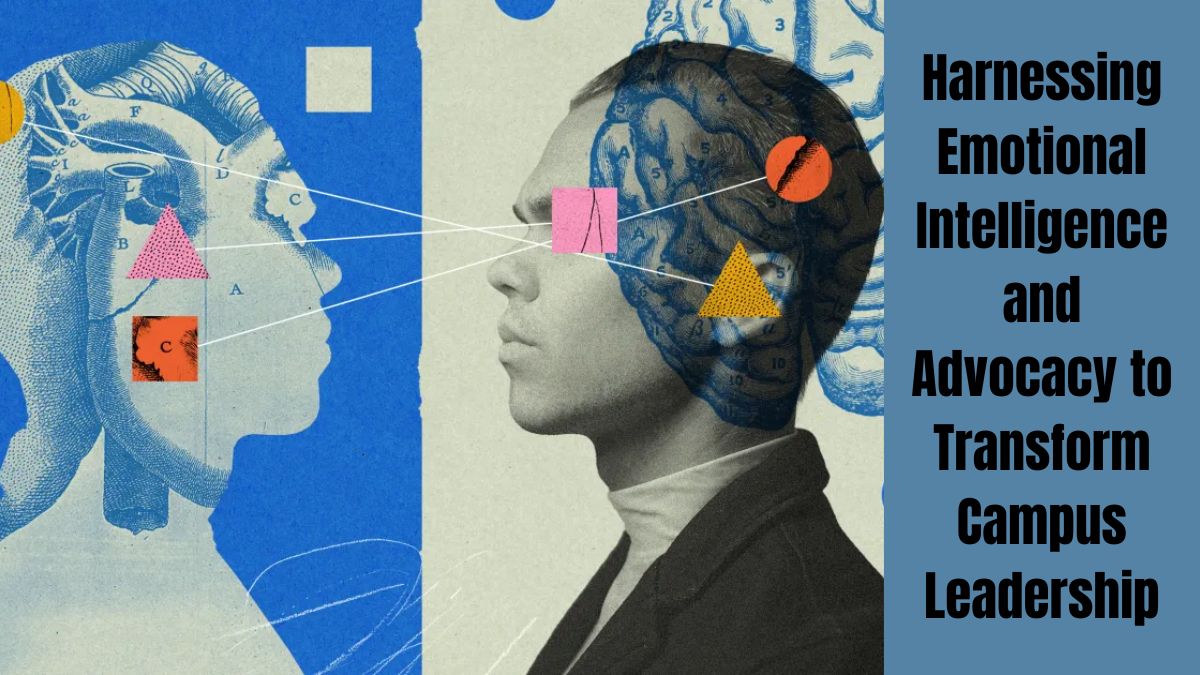In today’s educational environment, student leadership is not just a platform for students, but it has become an important part of their personal and professional development. It is not enough to study in the classroom; students also need to learn how they can become effective, sensitive and responsible leaders. In this context, emotional intelligence and advocacy are two aspects that can transform campus leadership in a real way.
Importance of Emotional Intelligence
Emotional Intelligence (EI) means understanding and properly managing your own and others’ emotions. When student leaders are equipped with EI qualities, they can communicate better in the team, resolve conflicts peacefully and create a positive atmosphere.
How EI makes student leaders stronger
- Self-awareness: Student leaders are able to identify what their strengths and weaknesses are. This improves decision-making ability.
- Self-regulation: The ability to remain calm in stressful situations brings trust and stability in leadership.
- Empathy: Understanding the perspectives and feelings of team members helps in building better relationships with them.
- Social Skills: This is very important for effective communication and teamwork.
Importance of Advocacy
Advocacy means raising voice for an issue, group or idea and working towards change. This is a powerful tool for student leaders, as with this they can bring positive change not only for themselves but also for their community.
How advocacy brings change in leadership
- Step towards equality and justice: Student leaders can challenge any inequality or discrimination through their advocacy.
- Availability of resources and opportunities: Demanding the necessary resources and facilities for students on campus.
- Voice of the student community: Bringing the problems and suggestions of the students to the administration.
Coordination of emotional intelligence and advocacy
When student leaders combine their EI with advocacy, their leadership becomes more effective. This combination makes students sensitive, understanding and responsible leaders.
Example of this: Imagine that student leaders in a university have to protest against rising prices in the cafeteria. If the leaders only protest without understanding the feelings of the team and the policies of the administration, it can create conflict. But if the same leaders use EI and advocacy, they will understand the feelings of the student community, give rational suggestions to the administration and be helpful in finding solutions.
Ways to develop EI for student leaders
- Self-reflection: Regularly reflecting on your experiences and feelings.
- Active listening: Listening carefully and understanding the team and classmates.
- Managing emotions: Learning to control emotions like anger or stress.
- Accepting Feedback: Taking positive and negative feedback as a learning opportunity.
Ways to develop advocacy skills in students
- Problem-solving workshops: Teaching students how to identify a problem and propose a solution.
- Community engagement: Actively participating in society or campus and understanding the real issues.
- Writing proposals and reports: Presenting your ideas to the administration or other groups.
- Advocacy through teamwork: Making group efforts together with other students.
Benefits of EI and advocacy in leadership
- Better collaboration in the team: Student leaders with EI increase the morale of the team.
- Positive environment: Resolving any conflict or differences constructively.
- Trust and motivation: The team’s trust in student leaders increases.
- Social impact: Student leaders can influence community issues through advocacy.
Effective decision making is made with EI and advocacy
Combining emotional intelligence and advocacy makes student leaders more responsible and thoughtful in decision making. This provides strategic advantages for them and their team.
Student leadership in the digital age
EI and advocacy have become even more important in today’s digital age. Student leaders can spread their views and advocacy on social media and online platforms. But empathy and understanding are also important in digital dialogue.
Examples of successful student leaders
Participation in leadership conference: Students who brought positive change in their college through EI and advocacy. Community projects: Students who spread awareness on local issues and proposed solutions.
Conclusion
Student leadership is not limited to position and authority. It defines the personality, thinking and role of students in society. Emotional intelligence and advocacy are two pillars that make student leaders competent, responsible and sensitive. When student leaders adopt the right blend of EI and Advocacy, not only do they grow personally but the entire campus environment changes positively.
